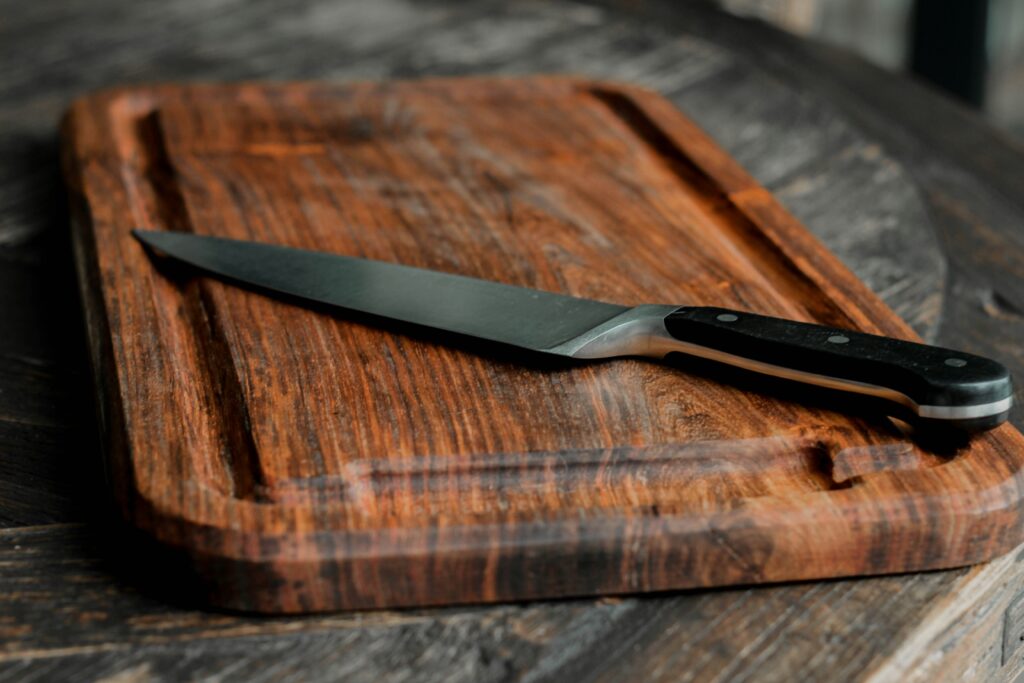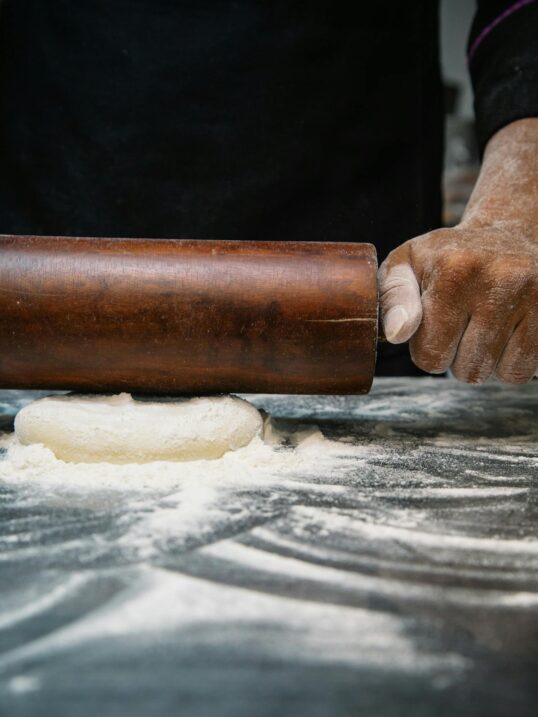Most recipes for cooking steak advise you to cut against the grain. While this is a general rule of thumb as far as steaks go, you might be puzzled about what this term means and its import.
In this article, we will understand what it means to cut meat against the grain and look at step-by-step instructions on following this practice.
How to Cut Steak Against the Grain
To cut the steak against the grain, you first need to identify the grain direction of the meat. You must also use the right tools and follow a few simple steps we’ll discuss here to get the most tender mouthful.
Read More: What to Do with Leftover Steak
Selecting the right tools for cutting steak
If you prepare steak often, you should invest in a good set of steak knives. Avoid serrated knives, as they shred the meat when you cut through and don’t give you a clean slice. The Victorinox Grand Maître Steak Knife Set is a great purchase, although pricey. For budget-friendly options, you could consider Messermeister’s Avanta 5” Steak Knife Set or the Table Knives from Material Kitchen.
Look for a knife with a super-sharp, smooth edge and a sturdy, preferably curved handle that fits neatly in your palm, giving you a firm grip.

You also need a good-quality cutting board that you use exclusively to cut or prepare meat.
Preparing the steak for cutting
In some cuts of meat with prominent muscle fibers, it is easy to identify how the grain runs. In other cuts, you need to take a close look at the meat before slicing into it. We’re talking about filet mignon, porterhouse (T-bone steak), and N.Y. strip, where the soft muscles don’t account for a discernible grain.
For these types of steak, it is easier to determine the grain before you cook it. We recommend using a sharp knife to make a small cut on the steak to indicate the grain direction. This way, when the steak is ready to be served, you know which way it should be sliced.
Step-by-Step Guide to Cutting Steak Against the Grain
Step 1: Let the Steak Rest
As always, the first step is to let the steak rest for a few minutes before you slice it. This helps in redistributing the flavor and juices through the meat.
Step 2: Position the Steak
Next, lay the steak on your cutting board so its grain is aligned horizontally or offset slightly so you can slice it comfortably.
Step 3: Identify the Grain Direction
Identify the grain direction by looking at the lines on the meat. If you left a cut on the steak before cooking, this should remind you of the grain direction.
Step 4: Slice Against the Grain
Hold your knife perpendicular (at 90°) to the grain and slice the meat at a slight bias. This means you tilt the knife by about 45° to the cutting board as you cut into the meat rather than cutting in a straight line all the way down. This increases the surface area of each slice, breaking down more muscle fibers in the process.
Step 5: Make Thin Slices
Make thin slices by running the knife back and forth across the steak, ensuring even and tender pieces for the best texture and flavor.
Quick Overview of Cutting Against the Grain
Before you slice up a steak, determine how its grain runs.
This can be done by observing the lines or striations on the surface of the meat. We aim to slice the steak perpendicular to these lines or cut against the grain of meat. Cut the steak With a sharp knife at 90° to the grain, making thin slices.
If you cut the steak parallel to the grain, you end up with meat that is chewy and unpalatable.
What Does “cutting against the grain” Mean?
Before we look at what it means to cut against the grain, let’s first understand the “grain” of meat.
Meat is made up of muscle fibers and connective tissue that run along the length of the individual parts of an animal’s body. While a single muscle fiber has just about the thickness of a human hair, these fibers are always bunched together in groups of about 50-300. The striations you see in most cuts of meat are actually bunched muscle fibers.
The direction in which these fibers run in a piece of meat is called its grain. Depending on how the meat is placed on your cutting board, the grain can be horizontal or vertical. It is essential to identify the grain of meat before you cook or slice it. Let’s look at why this is such an important step.
Why is it important to cut steak against the grain?
For a simple reason: how you cut steak makes all the difference between meat that’s tender and delectable or chewy and unappetizing. This is critical for some types of steak more than others.
Steak is made of protein from muscle groups with fat and collagen marbled through the meat cut. Some of these muscle groups work harder than others and do most of the heavy lifting, supporting the animal as it moves around. As a result, the meat cuts that contain these stronger muscles will be tougher, albeit more flavorful.
But, how do stronger muscles translate into tougher meat? Stronger, hard-working muscles have more muscle fibers bundled together. In addition, these fibers are longer and stronger when compared to those in less-used muscle groups.
When you cut meat against or across the grain, you are essentially breaking up the long muscle fibers into shorter pieces, making it easier to chew the meat. On the other hand, if you were to cut along the grain (parallel to the muscle fibers), the stringy fibers would remain intact and you would have to chew longer and harder.
The impact of cutting against the grain on the texture of the steak
When it comes to texture, no one type of steak is like the other. Nonetheless, steak cut against the grain will naturally have a tender, melt-in-the-mouth texture, as it is much easier to tear the muscle fibers apart in your mouth once they have been shortened.
The impact is more clearly felt for some types of steak, such as flank, skirt, or hangar, which are known to be tougher than rib-eye or tenderloin. What’s more, it is much easier to determine the grain of a flank or skirt steak than of a tenderloin owing to the presence of well-defined muscle fibers.
Read More: The Best Way to Reheat Steak Without Losing Flavor
Insider’s Insight
To summarise, meat consists of muscle fibers, connective tissue, fat, and collagen. Some cuts of meat, especially those containing stronger muscle groups, have a visible grain.
This indicates the direction in which muscle fibers are aligned within the meat. When slicing a steak, cutting against or across the grain is always recommended. This breaks up the muscle fibers into shorter pieces that can be easily chewed, resulting in tender meat. Cutting against the grain is particularly important for cuts such as flank, skirt, hangar, and flat iron.




Leave a Reply